Younger Generations Have Larger Brains. Is That Healthier? Science Alert - March 27, 2024
The size of the human brain may be gradually increasing over time, and that could reduce the risk of dementia in younger generations, according to new research. The study imaged the brains of more than 3,000 Americans, between the ages of 55 and 65, and found that those born in the 1970s have a 6.6 percent greater overall brain volume than those born in the 1930s. Members of Generation X also had a nearly 8 percent greater volume of white matter and an almost 15 percent greater volume of gray matter surface area than the members of the Silent Generation. One specific part of the brain, called the hippocampus, which plays a major role in memory and learning, expanded by 5.7 percent in volume over the successive generations studied. This was true even after considering other contributing factors like height, age, and sex.
World's First Neuralink User Plays Chess Via Thought After Brain Implant Science Alert - March 22, 2024
Recent study suggests that it's the speed of speech, rather than the difficulty in finding words that is a more accurate indicator of brain health in older adults Science Alert - March 15, 2024

The researchers asked 125 healthy adults, aged 18 to 90, to describe a scene in detail. Recordings of these descriptions were subsequently analyzed by artificial intelligence (AI) software to extract features such as speed of talking, duration of pauses between words, and the variety of words used. Participants also completed a standard set of tests that measure concentration, thinking speed, and the ability to plan and carry out tasks. Age-related decline in these "executive" abilities was closely linked to the pace of a person's everyday speech, suggesting a broader decline than just difficulty in finding the right word. A novel aspect of this study was the use of a "picture-word interference task", a clever task designed to separate the two steps of naming an object: finding the right word and instructing the mouth on how to say it out loud.
Breakthrough Therapy Obliterates Deadly Brain Tumor in Days Science Alert - March 15, 2024
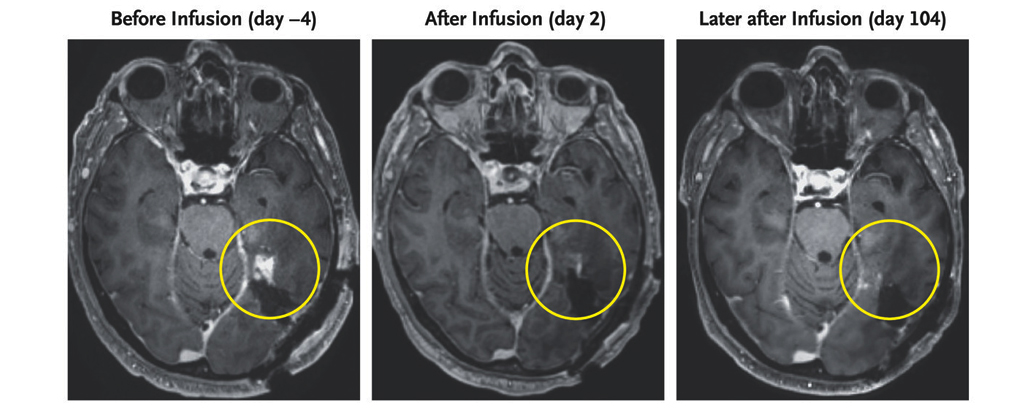
Brain scans of a 72-year-old man diagnosed with a highly aggressive form of cancer known as a glioblastoma have revealed a remarkable regression in his tumor's size within days of receiving an infusion of an innovative new treatment.
Scientists Discovered a 'Fear Switch' in The Brain, And How to Turn It Off Science Alert - March 15, 2024
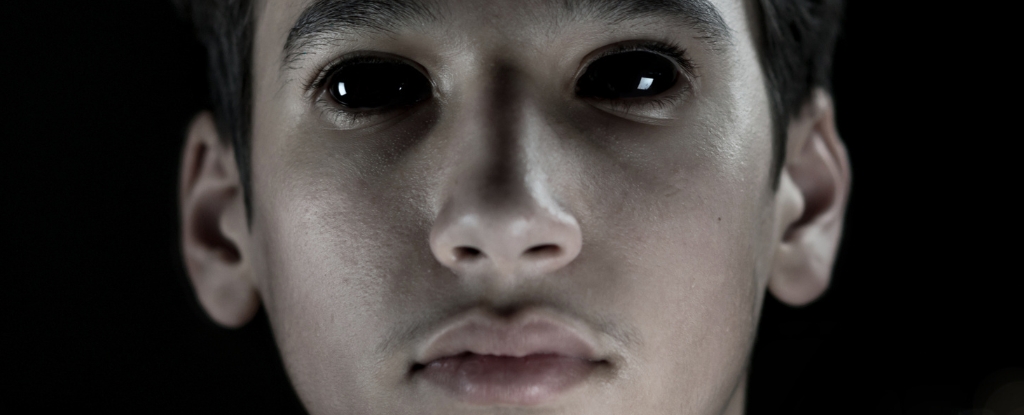
There are times when fear isn't an appropriate reaction. In cases such as anxiety disorders and stress disorders, the fear response can become disproportionate to the situation or environment of the individual, seriously impeding mental health and quality of life.
Expert Reveals What Intermittent Fasting Could Be Doing to Your Brain Science Alert - March 15, 2024
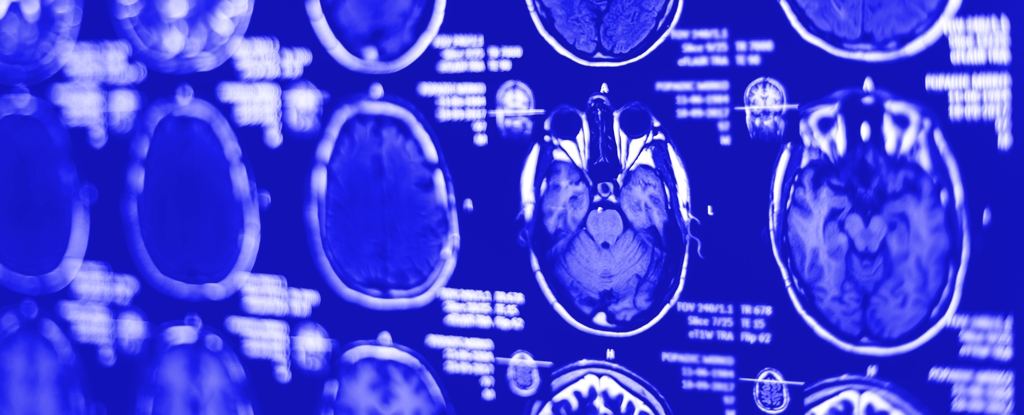
Intermittent fasting has become a popular dietary approach to help people lose or manage their weight. It has also been promoted as a way to reset metabolism, control chronic disease, slow ageing and improve overall health.
Aging And Schizophrenia Share Striking Similarities in 2 Types of Brain Cells Science Alert - March 14, 2024
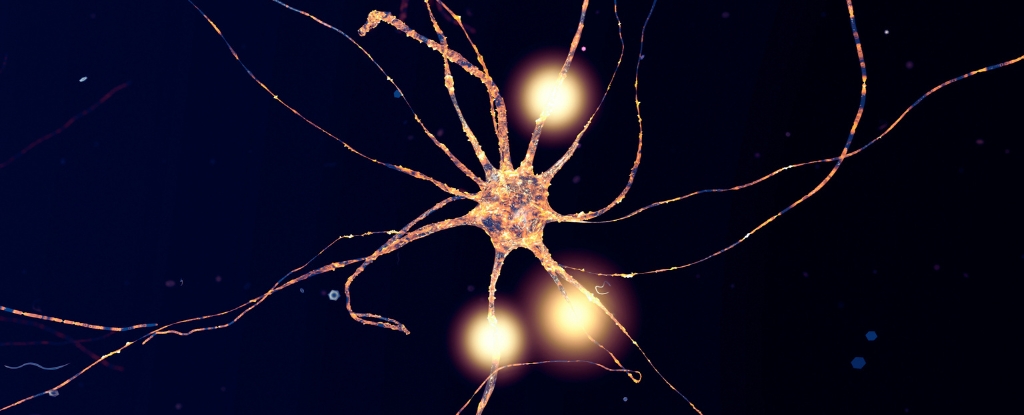
US researchers examined gene expression in more than a million brain cells collected post-mortem from 191 donors. Those with schizophrenia and older adults were found to have a comparatively reduced expression of specific genes in both neurons and supporting cells called astrocytes. These cell types are not acting as independent entities, but have really close coordination. The scientists named these synchronized changes – involved in communication hubs called synapses - the Synaptic Neuron and Astrocyte Program (SNAP).
Brain-Imaging Experiment Reveals The Secret Behind Creative Flow Science Alert - March 10, 2024
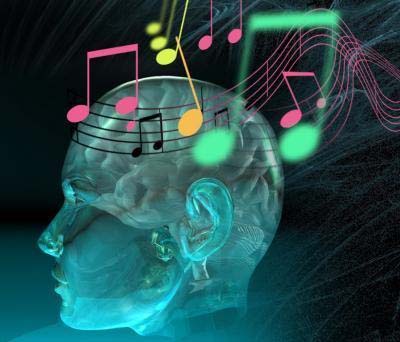
Getting into 'the zone' when being creative can be tricky, even if you've been there before. People strive for this famous mental state in a wide range of endeavors, many hoping for even just a few moments of fun, effortless productivity. Also known as 'flow,' the state of mind is a real psychological phenomenon, albeit still a poorly understood one. A new study by researchers from Drexel University in the US sheds light on what's happening inside a human brain during flow – and provides insight on how to achieve it.
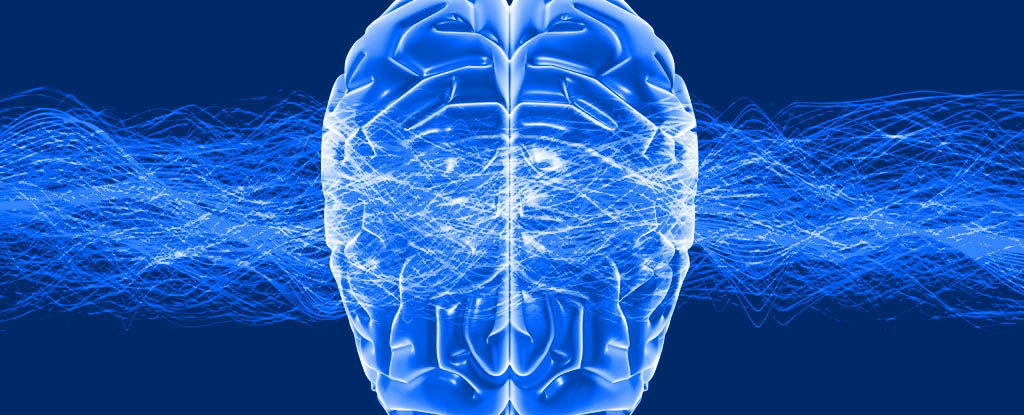
Ultrasound Can Probe Deep Into The Brain to Relieve Pain Science Alert - February 25, 2024
Treating pain in the brain isn't easy – what with it being essential for everything we think and do - but a newly developed, non-invasive method of using ultrasound is showing particular promise. Researchers used tightly focused beams of ultrasound, aimed at one particular part of the brain, to reduce the perception of pain and some of its related effects (such as heart rate changes). While this approach is still in the early stages, the team is hopeful that it can be developed further as a way of manipulating the brain and soothing our bodies, especially for those experiencing chronic pain.
'Time Cells' in Human Brain Encode The Flow of Time, Study Finds Science Alert - December 16, 2023

How does the human brain keep track of the order of events in a sequence? Research suggests that 'time cells' - neurons in the hippocampus thought to represent temporal information - could be the glue that sticks our memories together in the right sequence so that we can properly recall the correct order in which things happened.
New math approach provides insight into memory formation PhysOrg - December 5, 2023
The simple activity of walking through a room jumpstarts the neurons in the human brain. An explosion of electrochemical events or "neuronal spikes" appears at various times during the action. These spikes in activity, otherwise known as action potentials, are electrical impulses that occur when neurons communicate with one another
Most detailed human brain map ever contains 3,300 cell types Live Science - October 14, 2023
Scientists just unveiled the largest and most detailed "atlas" of the human brain ever created. It details the arrangement and inner workings of 3,300 types of brain cells, only a fraction of which were previously known to science. dvances and Science Translational Medicine.
Brain cells, interrupted: How some genes may cause autism, epilepsy and schizophrenia - October 2, 2023
A team of researchers has developed a new way to study how genes may cause autism and other neuro-developmental disorders: by growing tiny brain-like structures in the lab and tweaking their DNA. These "assembloids," could one day help researchers develop targeted treatments for autism spectrum disorder, intellectual disability, schizophrenia, and epilepsy.
Part of Your Brain Acts Like a Pause Button That Freezes Your Whole Body Science Alert - August 13, 2023
Deeply focused, our bodies can enter a literal state of suspended animation. Our limbs freeze. Breathing ceases. Heart rate slows. The Universe constricts until there is nothing but the task at hand. A selection of cells in a part of the brainstem called the pedunculopontine nucleus (PPN) could be responsible for this 'freeze frame' effect. The discovery not only helps us map the location of tissues that contribute to the more zen-like properties of the human mind, it could help us better understand the progress of symptoms in neurodegenerative conditions like Parkinson's disease, potentially leading to better forms of therapy.
Your Pupils Can Reveal a Hidden Signal About Your Brain Function Science Alert - August 12, 2023
The way your pupils react to light exercise could reveal whether you're getting one of the key benefits of movement – the cognitive boost linked to improved mood and enhanced executive function. Results showed that the more people's pupils dilated during light exercise - in other words, the bigger they got - the better the cognitive boost they received.
Mysterious Spiral-Shaped Signals Detected in The Human Brain Science Alert - June 30, 2023
The brain's intricate neural circuitry appears to have patterns of activity swirling on the surface. The cortex is the wrinkled outer layer of neuron-dense tissue that folds into the two hemispheres of our brain, responsible for computing complex cognitive functions such as language and storing memories. Functional MRI scans produce imaging data that shows when and where the brain 'lights up' in a burst of activity, flooded with oxygenated blood. The spiraling patterns identified in the data resemble kaleidoscopic waves or, when simplified into directional vortices, circular pressure lines on a weather map. These spiral patterns exhibit intricate and complex dynamics, moving across the brain's surface while rotating around central points known as phase singularities.
Conscious Activity Seen In Dying Brains May Explain Near-Death Experiences IFL Science - May 1, 2023
Researchers have observed the brains of dying patients going down in a blaze of neural glory, indicating that the final throes of life may be considerably more colorful than a mere fade to black. Despite their comatose state, some of the perishing participants displayed brain activity that is associated with consciousness during their last moments, all of which may explain the ethereal experiences often reported by heart attack survivors.
Mysterious Surge of Activity Detected in The Brains of Dying People Science Alert - May 1, 2023
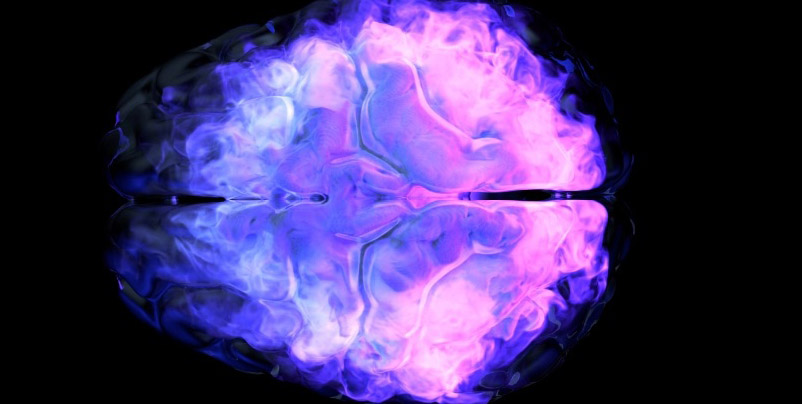
Scientists from the University of Michigan in the US have detected a surge of activity in the brains of two people as they transitioned into death, with the phenomenon similar to spikes of brain activity seen previously in animals whose hearts had stopped beating.
What Happens To Your Brain In A "Flow State" - engrossed in a task that you just lose yourself in it? How You Can Achieve It IFL Science - April 29, 2023
Despite that somewhat vague-sounding origin, today, flow is much more tightly understood. It’s not just a state of effortless focus – as scientists have learned in recent years, it actually comes with several observable changes in the brain. Underneath the flow state is a complicated mass of neurobiology.
A First-of-Its-Kind Signal Has Been Detected in The Human Brain Science Alert - April 19, 2023
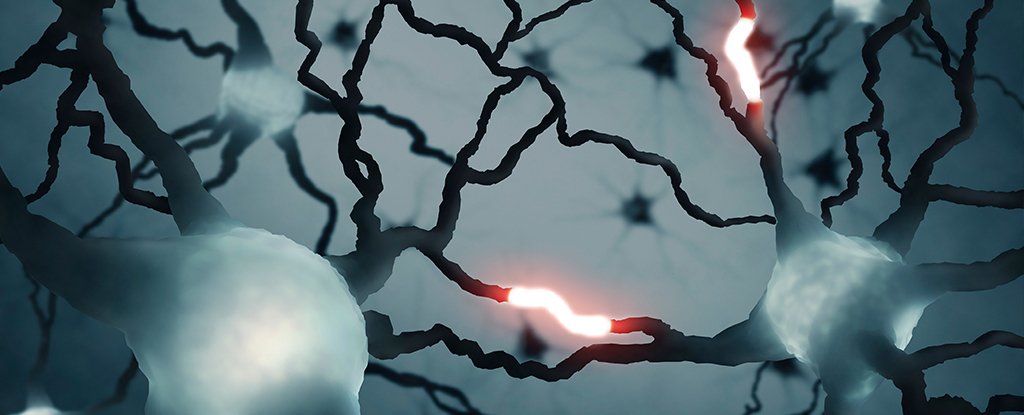
Scientists have recently identified a unique form of cell messaging occurring in the human brain that's not been seen before. Excitingly, the discovery hints that our brains might be even more powerful units of computation than we realized.
'Muscle memories' get 'zipped and unzipped' in the brain, like computer files Live Science - February 23, 2023
Tapping into your "muscle memory" to tie your shoes or play an instrument may feel automatic - but to execute these learned motions, the brain erupts into a flurry of activity, rapidly "unzipping" and "zipping" all the key information about the movement being performed, a new study suggests.
Some People's Brains Are Wrinklier Than Others, And Now We Know Why - a condition that affects normal brain development called Polymicrogyria (PMG) Science Alert - January 21, 2023
Polymicrogyria comes in many forms, with localized or widespread cortical thickening detectable on brain scans. Mutations in 30 genes and counting have been associated with the condition. But how any of those genetic errors, alone or in tandem, result in the overfolded brain tissue remains unclear. Many cases of PMG also lack an identifiable genetic cause. It's thought to have something to do with the tardy migration of cortical brain cells in early development that leads to a disordered cortex. The cortex is the outermost layer of the brain's two-lobed cerebrum, a thin sheet of gray matter composed of billions of cells.
Scientists Just Uncovered A Whole New Layer of Brain Anatomy Science Alert - January 5, 2023
The human brain is a ridiculously complex organ that doesn't give up its secrets easily. Thanks to advances in imaging technology, hidden forms and functions of neurological anatomy continue to emerge, from novel kinds of nerve cells to entirely new nubs of tissue.
Newfound 'protective shield' in the brain is like a watchtower for immune cells Live Science - January 5, 2023
A newfound "protective shield" in the brain helps clear waste from the organ and serves as a sentry tower for watchful immune cells that monitor for signs of infection, scientists reported in a study of mouse and human brains.
How the brain stores remote fear memory - a memory of traumatic events that occurred in the distant past Medical Express - December 23, 2022
A remote fear memory is a memory of traumatic events that occurred in the distant past - a few months to decades ago. The study demonstrates that remote fear memories formed in the distant past are permanently stored in connections between memory neurons in the prefrontal cortex, or PFC. It is the prefrontal memory circuits that are progressively strengthened after traumatic events and this strengthening plays a critical role in how fear memories mature to stabilized forms in the cerebral cortex for permanent storage.
Silent synapses are abundant in the adult brain. These immature connections may explain how the adult brain is able to form new memories and absorb new information Science Daily- December 1, 2022
Neuroscientists discovered that the adult brain contains millions of 'silent synapses' - immature connections between neurons that remain inactive until they're recruited to help form new memories. Until now, it was believed that silent synapses were present only during early development, when they help the brain learn the new information that it's exposed to early in life. However, the new MIT study revealed that in adult mice, about 30 percent of all synapses in the brain's cortex are silent. The existence of these silent synapses may help to explain how the adult brain is able to continually form new memories and learn new things without having to modify existing conventional synapses, the researchers say.
'Time Cells' in The Human Brain Encode The Flow of Time, Scientists Say Science Alert - October 27, 2022

How does the human brain keep track of the order of events in a sequence? Research suggests that 'time cells' - neurons in the hippocampus thought to represent temporal information - could be the glue that sticks our memories together in the right sequence so that we can properly recall the correct order in which things happened.
How does the brain store memories? Live Science - September 25, 2022
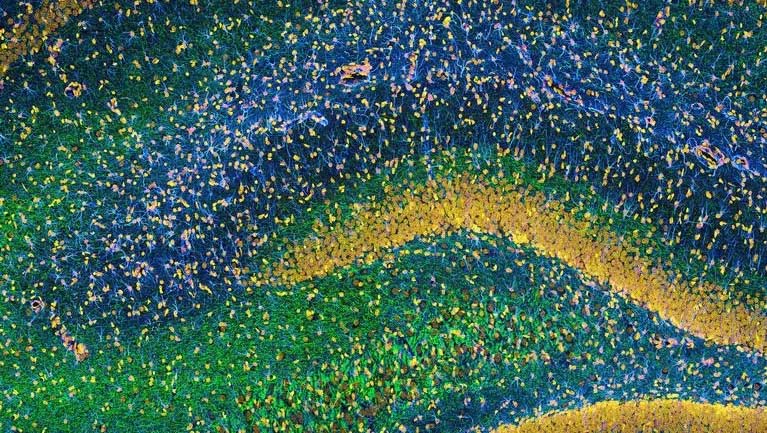
The simplest answer is that the human brain reshapes itself with each new memory. This happens through the actions of synapses, or the tiny gaps between brain cells. Brain cells, or neurons, communicate with each other through an elegant electrochemical system. A change in the electrical charge of one cell triggers the release of chemicals called neurotransmitters across synapses. The neurotransmitters are then taken up by the neuron on the other side of the gap, where they trigger electrical changes in that cell.
Looking at a Human Face Triggers Activity in Our Brains Unlike Any Other Object Science Alert - March 22, 2022
When the participants in an experiment looked at human faces, neurons fired and synchronized between the amygdala and the hippocampus in a specific pattern that was different to the results from the other stimuli - which the team interprets as evidence of how the brain handles memory encoding for important social information, distinct from other non-social objects.
There Are 'Secret' Tunnels Connecting Your Skull And The Brain Science Alert - March 17, 2022
Did you know you have tiny tunnels in your head? That's OK, no one else did either until recently! But that's exactly what a team of medical researchers confirmed in mice and humans in 2018 – tiny channels that connect skull bone marrow to the lining of the brain.
Scientists discover a brain circuit that triggers the execution of planned movement Science Daily - March 12, 2022
Planned movement is essential to our daily lives, and it often requires delayed execution. As children, we stood crouched and ready but waited for the shout of 'GO!' before sprinting from the starting line. As adults, we wait until the traffic light turns green before making a turn. New research explores how cues in our environment can trigger planned movement.
Scientists identify neurons in the brain that drive competition and social behavior within groups Science Daily - March 12, 2022
In mice, social ranking in a group was linked to the results of competition, and certain neurons in the brain stored this social ranking information to inform decisions. Manipulating the activity of these neurons could increase or decrease an animal's competitive effort and therefore control their ability to successfully compete against others.
Here's How The Human Brain Reboots Itself After The Deep Sleep of Anesthesia Science Alert - March 11, 2022
It turns out that the brain switches back on one section at a time, rather than all at once – and abstract problem-solving capabilities, as handled by the prefrontal cortex, are the functions that come back online the quickest. Other brain areas, including those managing reaction time and attention, take longer.
Just One Extra Drink a Day Is Linked to Brain Shrinking, Study of 36,000 People Shows Science Alert - March 10, 2022
Despite the joys that may come from a boozy Friday night, alcohol is bad for us. And not just in large quantities. Recent studies have been warning that even a moderate amount of drinking is linked to cardiovascular issues and brain damage. A new study looking at over 36,000 adults has now put the boot in as well, finding that going from one to two drink 'units' per day is linked to a shrinking of brain matter - equivalent to two years of aging.
The Search for Meaning in a Mysterious Brain Signal at Death Motherboard - March 10, 2022
Research on a surge of gamma wave activity at death has been cited as proof your life flashes before your eyes before you die; in truth, no one knows exactly what it means.
Study proposes how changes in the neural code unlock the brain's 'inner learning' Medical Express - March 10, 2022
Our brains are highly skilled at learning patterns in the world and making sense of them. The brain continually learns and adapts throughout our lives, and even the neurons supporting learned behaviors, such as the daily walk to work, are constantly changing. This "representational drift" occurs without any obvious change in behavior or task performance. Everything seems routine and stable, i.e., you follow the same path to work, make the same plan and take the same steps, but all the while, patterns of neural activity in certain parts of the brain are changing. A new study, published in the journal PNAS, proposes how the brain stays stable despite changes in the neural code.
How does the brain know whether our actions actually make a difference? Medical Express - March 10, 2022
Determining whether we have control over a situation is not just a matter of trial and error. Our ability to do so is strongly influenced by internal factors, most prominently by our mental state. High levels of stress, anxiety and depression impair people's sense of controllability, often causing them to believe that their actions don't matter, even when they do.
Researchers uncover how the human brain separates, stores, and retrieves memories Science Daily - March 9, 2022
Researchers have identified two types of cells in our brains that are involved in organizing discrete memories based on when they occurred. This finding improves our understanding of how the human brain forms memories and could have implications in memory disorders such as Alzheimer's disease.
Neuroscientists Find Two Types of Brain Cells That Help Us Make Memories Science Alert - March 9, 2022
Researchers have discovered two types of human brain cells that physically help us form memories. These cells play a significant role in dividing continuous conscious experience into distinct segments that can be recalled in the future.
How our environment affects what we remember Medical Express - March 10, 2022
Our episodic memory enables us to recount things that we personally experienced. For example, when reminiscing with a friend about seeing a film together in the cinema, people are able to share all kinds of funny details of things that happened that evening. When people think back to watching a film that made them emotional, this may even cause their heart to start racing again. That is because we relive experiences much more physically when our emotional memory is triggered. However, memories can change. We sometimes forget certain details, our memory starts to incorporate details from other experiences, or the evoked emotion of an experience becomes stronger when our memory of it is repeatedly triggered.
Seniors with memory issues take multiple meds, but most are willing to cut down Medical Express - March 8, 2022
In a study, researchers tracked a national sample of 422 seniors, representing 1.8 million Medicare beneficiaries, who were recruited by the National Health and Aging Trends Study (NHATS). Approximately three-quarters were 75-plus; 44% had possible dementia and 56% had probable dementia
Researchers uncover how the human brain separates, stores, and retrieves memories Science Daily - March 7, 2022
Researchers have identified two types of cells in our brains that are involved in organizing discrete memories based on when they occurred. This finding improves our understanding of how the human brain forms memories and could have implications in memory disorders such as Alzheimer's disease.
Science one step closer to 'turning off' seizures, sleep disturbances linked to intellectual disability Medical Express - February 24, 2022
The potential to zero in on the root-level cause of a host of adverse symptoms associated with unique subtypes of neuro-developmental disorders, work that could one day improve the lives of millions worldwide. Seizures and sleep deficits are two of the most common and most disruptive symptoms in children with neurodevelopmental disorders, and sleep deficits in particular are not well treated and can impact the entire family.
Neuroscientists identify population of neurons in the brain that respond to singing but not other types of music Medical Express - February 22, 2022
For the first time, MIT neuroscientists have identified a population of neurons in the human brain that lights up when we hear singing, but not other types of music. These neurons, found in the auditory cortex, appear to respond to the specific combination of voice and music, but not to either regular speech or instrumental music. Exactly what they are doing is unknown and will require more work to uncover, the researchers say.
We May Have Just Discovered Why Stressful Events Loom So Large in Memory Science Alert - October 23, 2021
You may have noticed that stressful situations tend to leave a bigger imprint on our memory banks than periods of peace and contentment, and new research may have now revealed the key reason why. There had been two schools of thought about this - that these stressful memories were either stored in a significantly different way or in a largely similar way in the brain - and this latest study backs up the second idea.
World-First Brain Implant Successfully Treats Resistant Depression in a Patient Science Alert - October 5, 2021
Altogether, up to a third of people with depression don't respond or become resistant to treatment. No medication or therapy type seems to help. For those with such treatment-resistant depression, the future can look especially bleak. This is what happened to Sarah, a 36-year-old woman who's had severe and treatment-resistant depression since she was a child. But a new proof-of-concept intervention has provided significant relief for Sarah, and could offer hope for many like her. The only catch? It requires a custom-designed 'brain pacemaker' for each person.
New study uncovers brain circuits that control fear responses Medical Express - October 5, 2021
The study, published today in Neuron, identifies a new brain circuit in the ventral lateral geniculate nucleus (vLGN), an inhibitory structure in the brain. The neuroscientists found that when activity in this brain region was suppressed, animals were more likely to seek safety and escape from perceived danger, whereas activation of vLGN neurons completely abolished escape responses to imminent threats. While it is normal to experience fear or anxiety in certain situations, we can adjust our fear responses depending on our knowledge or circumstances. For example, being woken up by loud blasts and bright lights nearby might evoke a fear reaction. But if you have experienced fireworks before, your knowledge will likely prevent such reactions and allow you to watch without fear. On the other hand, if you happen to be in a war zone, your fear reaction might be strongly increased.
Differences in brain structure between siblings make some more susceptible to developing severe antisocial behavior Medical Express - October 5, 2021
Structural differences in the area of the brain responsible for decision making could explain why two siblings living in the same family might differ in their risk of developing the condition conduct disorder.
Genetic predisposition to rare form of stroke identified Medical Express - October 5, 2021
New research from a consortium led by Royal Holloway, University of London, has identified the first genetic link for Cerebral Venous Thrombosis (CVT): an uncommon form of stroke affecting mostly young individuals, and primarily women.
Brain connections mean some people lack visual imagery Medical Express - June 9, 2021
New research has revealed that people with the ability to visualize vividly have a stronger connection between their visual network and the regions of the brain linked to decision-making. The study also sheds light on memory and personality differences between those with strong visual imagery and those who cannot hold a picture in their mind's eye.
Scientists have reported finding some success in using low intensity, focused ultrasound to 'jumpstart' parts of the brains of people in coma-like conditions, reawakening certain functions in patients who had previously been in a "minimally conscious state" Science Alert - January 30, 2021
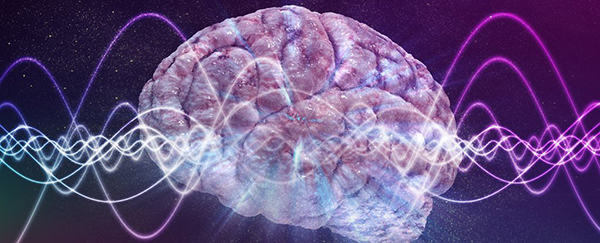
Does the human brain resemble the Universe? PhysOrg - November 18, 2020
An astrophysicist at the University of Bologna and a neurosurgeon at the University of Verona compared the network of neuronal cells in the human brain with the cosmic network of galaxies... and surprising similarities emerged
Scientists: The Human Brain Has Odd Similarities to the Entire Universe Futurism - November 18, 2020
IMG SRC="daydreaming-binarycode.jpg" width=500>
An astrophysicist and a neurosurgeon walked into a room. It may sound like the beginning of a bad joke, but what a pair of Italian researchers came up with is a truly galaxy brain take: The structures of the observable universe, they say, is astonishingly similar to the neuronal networks of the human brain. The brain contains an estimated 69 billion neurons, while the observable universe is composed of at least 100 billion galaxies, strung together loosely like a web. Both actual galaxies and neurons only account for about 30 percent of the total masses of the universe and brain, respectively. And both galaxies and neurons arrange themselves like beads on long strings or filaments. In the case of galaxies, the remaining 70 percent of mass is dark energy. The equivalent in the human brain, the duo said: water.
'Tired' brain cells may distort your sense of time Live Science - September 29, 2020
Time in the brain doesn't follow the steady ticking of the world's most precise clocks. Instead, it seems to fly by at one moment and practically stand still at others. This distorted sense of time may be caused, in part, by brain cells getting tired, according to a new study. When the brain has been exposed to the same exact time interval too many times, neurons or brain cells get overstimulated and fire less often, the study finds. However, our perception of time is complicated, and many other factors may also explain why time moves slowly sometimes and quickly at others. We have only very recently begun to understand how our brains perceive time. It was only in 2015, that researchers found the first evidence of neurons whose activity fluctuates with our perception of time. But it wasn't clear if these neurons, found in a small brain region called the supramarginal gyrus (SMG), were keeping accurate time for the brain, or creating a subjective experience of time.
Research advances understanding of how the brain focuses while ignoring distractions Medical Express - July 8, 2020
When trying to complete a task we are constantly bombarded by distracting stimuli. How does the brain filter out these distractions and enable us to focus on the task at hand? Psychologists at the University of California, Riverside, have made a discovery that could lead to an answer.
Found: Brain structure that controls our behavior Medical Express - May 19, 2020
For our social life and our profession we must be able to deal with our environment and other people. Executive functions, meaning the basic intellectual abilities that control human thought and action, help us to do this. These include selective attention, otherwise known as the ability to concentrate on one stimulus and suppress others, or the working memory, with which we can retain and manipulate information. These functions also enable us to plan actions and to divide them into individual steps. However, some people do not succeed, finding it difficult to focus, plan their actions in a goal-oriented manner, and they have poor control over their impulses and emotions. They suffer from a condition called Dysexecutive Syndrome, which is often caused by craniocerebral trauma or a stroke.
Scientists find brain center that 'profoundly' shuts down pain Science Daily - May 18, 2020
Somewhat unexpectedly, this brain center turns pain off, not on. It's located in an area where few people would have thought to look for an anti-pain center, the amygdala, which is often considered the home of negative emotions and responses, like the fight or flight response and general anxiety.
Genetic regions associated with left-handedness identified and linked with brain architecture in language regions Science Daily - September 7, 2019
A new study has for the first time identified regions of the genome associated with left-handedness in the general population and linked their effects with brain architecture. Of the four genetic regions they identified, three of these were associated with proteins involved in brain development and structure. In particular, these proteins were related to microtubules, which are part of the scaffolding inside cells, called the cytoskeleton, which guides the construction and functioning of the cells in the body.
Scratching the surface of how your brain senses an itch Science Daily - August 25, 2019
Light touch plays a critical role in everyday tasks, such as picking up a glass or playing a musical instrument, as well as for detecting the touch of, say, biting insects. Researchers have discovered how neurons in the spinal cord help transmit such itch signals to the brain. The findings could help contribute to a better understanding of itch and could lead to new drugs to treat chronic itch, which occurs in such conditions as eczema, diabetes and even some cancers.
Mapping the path from symbol visualization to comprehension in the brain Medical Express - August 20, 2019
Researchers mapped the neural process that occurs during conversion of symbols that are read to understanding what they mean. Processing occurs in the brain when converting given symbols to meaningful information. The first time a reader encounters an acronym on Twitter, for example, they learn it, and from then on, the conversion happens naturally. In this new effort, the researchers sought to learn more about what actually happens in the brain when that conversion occurs.
Researcher decodes the brain to help patients with mental illnesses Medical Express - August 16, 2019
Approximately 1 in 5 adults in the United States experience mental illness in a given year. Severe mental illnesses cause the brain to have trouble dealing with cognitively effortful states, like focusing attention over long periods of time, discriminating between two things that are difficult to tell apart, and responding quickly to information that is coming in fast.
A HREF="https://medicalxpress.com/news/2019-06-neurons-affect-dont.html">These neurons affect how much you do, or don't, want to eat Medical Express - June 25, 2019
Like a symphony, multiple brain regions work in concert to regulate the need to eat.
How the brain helps us make good decisions and bad ones Medical Express - June 25, 2019
A prevailing theory in neuroscience holds that people make decisions based on integrated global calculations that occur within the frontal cortex of the brain. However, Yale researchers have found that three distinct circuits connecting to different brain regions are involved in making good decisions, bad ones and determining which of those past choices to store in memory
Rhythmic control of 'brain waves' can boost memory: study Medical Express - June 6, 2019
Controlling the frequency of 'brain waves' could help to improve people's recall of memories and potentially provide a key to unlock conditions such as Alzheimer's disease, according to a new article.
New neurons form in the brain into the tenth decade of life, even in people with Alzheimer's Medical Express - May 24, 2019
In a new study from the University of Illinois at Chicago, researchers examining post-mortem brain tissue from people ages 79 to 99 found that new neurons continue to form well into old age. The study provides evidence that this occurs even in people with cognitive impairment and Alzheimer's disease, although neurogenesis is significantly reduced in these people compared to older adults with normal cognitive functioning.
How to enhance or suppress memories - Stimulating different parts of the brain can dial up or down a specific memory's emotional oomph, study shows Science Daily - May 24, 2019
Neuroscientists identify a brain circuit that helps break decisions down into smaller pieces Science Daily - May 17, 2019
Neuroscientists have identified a brain circuit that helps break complex decisions down into smaller pieces. The study sheds light on how the brain reasons about probable causes of failure after a hierarchy of decisions.
Blood flow command centre discovered in the brain Medical Express - May 15, 2019
A team of scientists from Australia, France, New Zealand and the UK has discovered a group of brain cells that function as a 'master-controller' for the cardiovascular system by orchestrating the control of blood flow to different parts of the body.
Brain-controlled, non-invasive muscle stimulation allows chronic paraplegics to walk Medical Express - May 15, 2019
In another major clinical breakthrough of the Walk Again Project, a nonprofit international consortium aimed at developing new neurorehabilitation protocols, technologies, and therapies for spinal cord injury, two patients with paraplegia regained the ability to walk with minimal assistance, via a fully non-invasive brain-machine interface that does not require the use of any invasive spinal cord surgical procedure.
Room for thought: Brain region that watches for walls identified Science Daily - May 13, 2019
To move through the world, you need a sense of your surroundings, especially of the constraints that restrict your movement: the walls, ceiling and other barriers that define the geometry of the navigable space around you. And now, a team of neuroscientists has identified an area of the human brain dedicated to perceiving this geometry. This brain region orients us in space, so we can avoid bumping into things, figure out where we are and navigate safely through our environment.
Dopamine conducts prefrontal cortex ensembles Medical Express - April 2, 2019
Anyone who has savored a bite of chocolate or glanced at each new blinking notification on their smart phone is familiar with dopamine. But that is not all dopamine does. This chemical neurotransmitter also plays a fundamental role in the prefrontal cortex of the brain, which controls higher functions such as paying attention, staying motivated, and making decisions. Now, research in reveals for the first time how dopamine changes the function of the prefrontal cortex. Researchers found that dopamine has little effect on individual cells. Instead, it generates sustained activity in the ensemble of cells in the prefrontal cortex that lasts for up to 20 minutes.
New brain cells made throughout life BBC - March 25, 2019
People keep making new brain cells throughout their lives (well at least until the age of 97), according to a study on human brains. The idea has been fiercely debated, and it used to be thought we were born with all the brain cells we will ever have. The researchers at the University of Madrid also showed that the number of new brain cells tailed off with age. And it falls dramatically in the early stages of Alzheimer's disease - giving new ideas for treating the dementia. Most of our neurons - brain cells that send electrical signals - are indeed in place by the time we are born. Studies on other mammals have found new brains cells forming later in life, but the extent of "neurogenesis" in the human brain is still a source of debate.
Our ability to detect patterns might stem from the brain's desire to represent things in the simplest way possible Medical Express - March 6, 2019
During their first year of life, infants can recognize patterned sound sequences. As we grow, we develop the ability to pick out increasingly complex patterns within streams of words and musical notes. Traditionally, cognitive scientists have assumed that the brain uses a complicated algorithm to find links between disparate concepts, thereby yielding a higher-level understanding. Researchers are building an entirely different model, indicating that our ability to detect patterns might stem, in part, from the brain's desire to represent things in the simplest way possible.
More than just memories - a new role for the hippocampus during learning Medical Express - March 6, 2019
This study has important implications for understanding how the brain's memory systems contribute to learning and decision-making.
Background music disrupts creativity and verbal reasoning, experts say Daily Mail - February 28, 2019
The common belief that music boosts brain function and spurs creativity may be little more than a myth, after researchers found 'strong' evidence to suggest the opposite to be true. Music was found to significantly 'disrupt' a host of brain functions that are associated with creativity, including verbal ability and problem solving, a new study has showed. Performing these tasks under library environments however did not affect performance when compared to with working in the quiet. Putting background music on while you work or revise could in fact stunt creativity and prevents concentration, contrary to popular belief.
Scientists shed light on processes behind age-related decline in brain structures important for memory Medical Express - January 31, 2019
Aging can cause damage to support cells in the white matter, which in turn may lead to damage in the grey matter of the hippocampus. A new study not only confirms that aging leads to both grey matter decline in the hippocampus and white matter decline in the surrounding area, but also reveals the causal relationship between the two.
To predict the future, the brain uses two clocks - In music, sports and other activities, we calculate movement in two different parts of the brain Science Daily - November 24, 2018
One type of anticipatory timing relies on memories from past experiences. The other on rhythm. Both are critical to our ability to navigate and enjoy the world, and scientists have found they are handled in two different parts of the brain.
Mind's quality control center found in long-ignored brain area Medical Express - October 25, 2018
The cerebellum can't get no respect. Located inconveniently on the underside of the brain and initially thought to be limited to controlling movement, the cerebellum has long been treated like an afterthought by researchers studying higher brain functions. But researchers say overlooking the cerebellum is a mistake. Their findings suggest that the cerebellum has a hand in every aspect of higher brain functions - not just movement, but attention, thinking, planning and decision-making.
The 'chasing dots' optical illusion that reveals how our brains work
Daily Mail - October 17, 2018
Scientists have developed an optical illusion that makes the brain believe a
simulated scenario is actually reality. The illusion places two dots on a moving
map of the city of Tokyo. It appears that the red dot is chasing the blue dot.
Scientists unlock secret of how the brain encodes speech Medical Express - September 26, 2018
People like the late Stephen Hawking can think about what they want to say, but are unable to speak because their muscles are paralyzed. In order to communicate, they can use devices that sense a person's eye or cheek movements to spell out words one letter at a time. However, this process is slow and unnatural. Scientists want to help these completely paralyzed, or "locked-in," individuals communicate more intuitively by developing a brain machine interface to decode the commands the brain is sending to the tongue, palate, lips and larynx (articulators.) The person would simply try to say words and the brain machine interface (BMI) would translate into speech.
Why it doesn't get dark each time you blink: Scientists find a region of the brain that provides a picture of our surroundings even while our eyes are briefly closed Daily Mail - September 24, 2018
Scientists may have finally solved a long-standing mystery over why it doesn't get dark when we blink. Humans blink around once every five seconds to keep our eyes moist, briefly shutting off light from our eyes. Researchers have now found a brain region that they believe provides a picture of our surroundings while our eyes are closed for each brief second. It remembers what we've just seen and overlays the image onto the dark patches during blinks to create a continual image. Scientists say the region, which is involved in our short-term memory, allows us to maintain a stable idea of what's around us despite regularly shutting off our vision.
Thousands of unknown DNA changes in the developing brain revealed by machine learning Medical Express - September 24, 2018
Unlike most cells in the rest of our body, the DNA (the genome) in each of our brain cells is not the same: it varies from cell to cell, caused by somatic changes. This could explain many mysteries - from the cause of Alzheimer's disease and autism to how our personality develops. But much remains unknown, including when these changes arise, their size and locations, and whether they are random or regulated. DNA technologies used to study these "copy number variations" (CNVs) in single brain cells have been limited to longer DNA sequences - those above one million base pairs.
Sugar pills relieve pain for chronic pain patients Science Daily - September 12, 2018
Placebo benefits can be predicted by brain anatomy and psychological traits - Someday doctors may prescribe sugar pills for certain chronic pain patients based on their brain anatomy and psychology. And the pills will reduce their pain as effectively as any powerful drug on the market, according to new research. Scientists have shown they can reliably predict which chronic pain patients will respond to a sugar placebo pill based on the patients' brain anatomy and psychological characteristics.
Researchers unearth secret tunnels between the skull and the brain Medical Express - August 27, 2018
Bone marrow, the spongy tissue inside most of our bones, produces red blood cells as well as immune cells that help fight off infections and heal injuries. According to a new study of mice and humans, tiny tunnels run from skull bone marrow to the lining of the brain and may provide a direct route for immune cells responding to injuries caused by stroke and other brain disorders.
Scientists Find a Strange New Cell in Human Brains: The 'Rosehip Neuron' Live Science - August 27, 2018
Neuroscientists have made a rosy discovery: a new type of human brain cell. The newest neuron has been named the "rosehip neuron," thanks to its bushy appearance. The brain cell, with its unique genes, distinctive shape and diverse connections with other neurons, has not been described before and, what's more, it isn't present in neuroscientists' favorite subject: mice.
MS researchers find new ways to regenerate the brain's insulation Medical Express - August 27, 2018
Finding ways to restore the myelin sheath is recogniszed as important to preventing the progression of disability in MS patients.
Blood vessels instruct brain development
Function and homeostasis of the brain relies on communication between its complex network of cells. Consequently, development of the different groups of cells in the brain needs to be coordinated in time and space.
Diet: Found: A destructive mechanism that blocks the brain from knowing when to stop eating Science Daily - August 22, 2018
Researchers have uncovered a destructive mechanism at the molecular level that causes a well-known phenomenon associated with obesity: leptin resistance. They found that mice fed a high-fat diet produce an enzyme named MMP-2 that clips receptors for the hormone leptin from the surface of neuronal cells in the hypothalamus. This blocks leptin from binding to its receptors. This in turn keeps the neurons from signaling that your stomach is full and you should stop eating.
Flip a switch and shut down seizures? New research suggests how to turn off out-of-control signaling in the brain Medical Express - August 10, 2018
he brain is a precision instrument. Its function depends on finely calibrated electrical activity triggering the release of chemical messages between neurons. But sometimes the brain's careful balance is knocked out of control, as in epilepsy. Electroencephalography, or EEG, visualizes a brain's electrical activity and can reveal how an epileptic seizure diverges from the predictable wave pattern of typical brain activity. But medicine still lacks a solution to epilepsy. There's limited possibility of predicting a seizure, and no way to intervene even when you can predict. Although pharmaceuticals are available to people dealing with epilepsy, they are fraught with side effects, and they do not work for everyone.
Pay attention – how the brain performs a background scan to help focus Medical Express - July 13, 2018
In simple terms, scanning function explains for example how we have the mental capacity to react suddenly while driving. This background scanning activity frees up cognitive function, so that if someone steps out in front of the car, we have neurons available to focus on the new action.
Where the brain processes spiritual experiences Science Daily - June 2, 2018
Yale scientists have identified a possible neurobiological home for the spiritual experience -- the sense of connection to something greater than oneself. Activity in the parietal cortex, an area of the brain involved in awareness of self and others as well as attention processing, seems to be a common element among individuals who have experienced a variety of spiritual experiences. researchers stressed other brain areas are probably also involved in formation of spiritual experiences. The method can help future researchers study spiritual experience and its impact on mental health, he said.
Study reveals brain activity patterns underlying fluent speech Medical Express - June 1, 2018
When we speak, we engage nearly 100 muscles, continuously moving our lips, jaw, tongue, and throat to shape our breath into the fluent sequences of sounds that form our words and sentences. A new study by UC San Francisco scientists reveals how these complex articulatory movements are coordinated in the brain. The new research reveals that the brain's speech centers are organized more according to the physical needs of the vocal tract as it produces speech than by how the speech sounds (its "phonetics"). Linguists divide speech into abstract units of sound called "phonemes" and consider the /k/ sound in "keep" the same as the /k/ in "coop." But in reality, your mouth forms the sound differently in these two words to prepare for the different vowels that follow, and this physical distinction now appears to be more important to the brain regions responsible for producing speech than the theoretical sameness of the phoneme.
Some human brains are nearly twice the size of others but how might that matter? Medical Express - June 1, 2018
Differences in size are related to the brain's shape and the way it is organized. The bigger the brain, the more its additional area is accounted for by growth in thinking areas of the cortex, or outer mantle - at the expense of relatively slower growth in lower order emotional, sensory, and motor areas.
Scientists find fear, courage switches in brain Science Daily - May 2, 2018
Located smack-dab in the middle of the brain, these clusters, or nuclei, each send signals to a different area of the brain, igniting opposite behaviors in the face of a visual threat. By selectively altering the activation levels of the two nuclei, the investigators could dispose the mice to freeze or duck into a hiding space, or to aggressively stand their ground, when approached by a simulated predator.
Brain injuries increase dementia risk, study finds BBC - April 11, 2018
An analysis of 2.8 million people found those who had one or more traumatic brain injuries were 24% more likely to get dementia than those who had not. The risk was greatest in people who had the injuries in their 20s, who were 63% more likely to get the condition at some point in their life.
Older adults grow just as many new brain cells as young people Science Daily - April 6, 2018
Researchers show for the first time that healthy older men and women can generate just as many new brain cells as younger people. There has been controversy over whether adult humans grow new neurons, and some research has previously suggested that the adult brain was hard-wired and that adults did not grow new neurons. This study counters that notion. The findings may suggest that many senior citizens remain more cognitively and emotionally intact than commonly believed.
The brain learns completely differently than we've assumed since the 20th century Medical Express - March 23, 2018
The brain is a complex network containing billions of neurons, where each of these neurons communicates simultaneously with thousands of other via their synapses (links). However, the neuron actually collects its many synaptic incoming signals through several extremely long ramified "arms" only, called dendritic trees.
Hyperreality: How Will Your Brain Handle the Future Internet? Seeker - March 22, 2018
Technology is changing the way our brains work. Cell phones and computers trigger cognitive offloading. For example, it used to be common to memorize phone numbers; many people can still recall their childhood best friend’s number. However, children today will most likely never commit a phone number to memory. This is cognitive offloading - information is put into devices so we do not have to store it in our brains. This is one example, of many, that showcases how technology is possibly negatively impacting our brains. But what are ways internet obsession can be used for good? Hyperreality may hold the answer.
Do you see what I see? Researchers harness brain waves to reconstruct images of what we perceive Medical Express - February 22, 2018
A new technique developed by neuroscientists at the University of Toronto Scarborough can, for the first time, reconstruct images of what people perceive based on their brain activity gathered by EEG. The technique developed by Dan Nemrodov, a postdoctoral fellow in Assistant Professor Adrian Nestor's lab at U of T Scarborough, is able to digitally reconstruct images seen by test subjects based on electroencephalography (EEG) data.
Neuroscientists discover a brain signal that indicates whether speech has been understood Medical Express - February 22, 2018
Neuroscientists from Trinity College Dublin and the University of Rochester have identified a specific brain signal associated with the conversion of speech into understanding. The signal is present when the listener has understood what they have heard, but it is absent when they either did not understand, or weren't paying attention. The uniqueness of the signal means that it could have a number of potential applications, such as tracking language development in infants, assessing brain function in unresponsive patients, or determining the early onset of dementia in older persons.
Human brain tripled in size gradually over three million years as we developed culture, language, and the ability to make tools, study reveals Daily Mail - February 21, 2018
The evolution of the human brain may have occurred far more gradually than previously believed. A new study on nearly 100 fossils from several different human species has found that brain size tripled over the course of the last three million years, in a process that was likely slow and consistent, as opposed to a series of 'step-like increases.' Experts say the shift was driven by increasing complexity, as humans developed culture, language, and the ability to make tools.
Brain-machine interface study suggests how brains prepare for action Medical Express - February 16, 2018
Somewhere right now in Pyeongchang, South Korea, an Olympic skier is thinking through the twists and spins she'll make in the aerial competition, a speed skater is visualizing how he'll sneak past a competitor on the inside line, and a curler is imagining the perfect sweep. It's called mental rehearsal, and psychologists and athletes alike know that it works: picturing ourselves going through routines, whether it's figure skating or something more mundane, improves our chances of success.
Researchers discover brain cells change following close contact with a stressed individual Medical Express - February 16, 2018
Health-care workers treating soldiers with post-traumatic stress disorder (PTSD) report that some soldiers' partners and family members display symptoms of PTSD despite never serving in the military. Stress transmitted from others can change the brain in the same way as a real stress does.
Tickling the brain with electrical stimulation improves memory Science Daily - January 29, 2018
Tickling the brain with low-intensity electrical stimulation in a specific area can improve verbal short-term memory. Mayo Clinic researchers report their findings in Brain. The researchers found word recall was enhanced with stimulation of the brain's lateral temporal cortex, the regions on the sides of the head by the temples and ears. Patients recalled more words from a previously viewed list when low-amplitude electrical stimulation was delivered to the brain. One patient reported that it was easier to picture the words in his mind for remembering.
Unique pattern of neural wiring in people who are creative geniuses is found for the first time Daily Mail - January 16, 2018
A simple brain scan can now determine whether or not you have a creative mind. Scientists have found a pattern of neural activity that marks out people who are good at generating original ideas, such as Steve Jobs and Elon Musk. Experts could one day target the brain regions responsible using a 'creativity pill' to make people more imaginative, according to one researcher.
That music playing in your head is a real conundrum for scientists Medical Express - November 10, 2017
Researchers at EPFL can now see what happens in our brains when we hear music in our heads. The researchers hope that in time their findings will be used to help people who have lost the ability to speak. When we listen to music, different parts of our brain process different information - such as high and low frequencies - so that our auditory perception of the sounds matches what we hear. It's easy to study the brain activity of someone who is listening to a song, for instance, as we have the technology to record and analyze the neural responses that each sound produces as it is heard. It's much more complicated, however, to try and understand what happens in our brain when we hear music in our heads without any auditory stimulation. As with analyzing real music, the brain's responses have to be linked to a given sound. But when the music is in our heads, that sound doesn't actually exist - or at least our ears don't hear it. Using a novel approach, researchers with EPFL's Defitech Foundation Chair in Human-Machine Interface (CNBI) were able to analyze what happens in our brains when we hum in our heads.
How Your Brain Blocks Out Unwanted Thoughts and Memories Live Science - November 7, 2017
A new, small study study suggests that GABA, or gamma-Aminobutyric acid, plays a key role in suppressing unwanted thoughts and memories in a region of the brain called the hippocampus. GABA is a neurotransmitter, or chemical messenger, that's found throughout mammals' central nervous systems. The new finding offers insight into how humans pull off the daily mental task of squashing down thoughts they don't want to think about, according to the study. The study also provides clues as to what goes wrong in the brains of people with illnesses such as schizophrenia, in which people have trouble suppressing intrusive thoughts, the researchers said.
Brain waves reflect different types of learning Science Daily - October 13, 2017
Researchers have, for the first time, identified neural signatures of explicit and implicit learning. Figuring out how to pedal a bike and memorizing the rules of chess require two different types of learning, and now for the first time, researchers have been able to distinguish each type of learning by the brain-wave patterns it produces.
Human brain recalls visual features in reverse order than it detects them Science Daily - October 10, 2017
Study challenges traditional hierarchy of brain decoding; offers insight into how the brain makes perceptual judgements. New research has contributed to solving a paradox of perception, literally upending models of how the brain constructs interpretations of the outside world. When observing a scene, the brain first processes details -- spots, lines and simple shapes -- and uses that information to build internal representations of more complex objects, like cars and people. But during recall, the brain remembers those larger concepts first. This could shed light on concepts such as eyewitness testimony to autism.
First evidence of the body's waste system in the human brain discovered Science Daily - October 3, 2017
By scanning the brains of healthy volunteers, researchers saw the first, long-sought evidence that our brains may drain some waste out through lymphatic vessels, the body's sewer system. The results further suggest the vessels could act as a pipeline between the brain and the immune system.
The Human Brain Can Create Structures in Up to 11 Dimensions Science Alert - September 20, 2017
Neuroscientists have used a classic branch of maths in a totally new way to peer into the structure of our brains. What they've discovered is that the brain is full of multi-dimensional geometrical structures operating in as many as 11 dimensions.
Scientists find evidence of a multidimensional universe inside our brain Educate Inspire.com - September 20, 2017
With the help of mathematical methods of algebraic topology, scientists have found structures and multidimensional geometric spaces in human brain networks. Experts have previously stated how human brains are estimated to contain a staggering 86 billion neurons, including several connections from each cell expanding and connecting in every possible direction producing a super-vast cellular network that somehow makes us capable of thought and consciousness.
Brain cells found to control aging Science Daily - July 27, 2017
Scientists at Albert Einstein College of Medicine have found that stem cells in the brain's hypothalamus govern how fast aging occurs in the body. The hypothalamus was known to regulate important processes including growth, development, reproduction and metabolism. In a 2013 Nature paper, Einstein researchers made the surprising finding that the hypothalamus also regulates aging throughout the body. Now, the scientists have pinpointed the cells in the hypothalamus that control aging: a tiny population of adult neural stem cells, which were known to be responsible for forming new brain neurons.
The Strange Similarity of Neuron and Galaxy Networks Nautil.us - July 25, 2017
An astrophysicist and a neuroscientist joined forces to quantitatively compare the complexity of galaxy networks and neuronal networks. The first results from our comparison are truly surprising: Not only are the complexities of the brain and cosmic web actually similar, but so are their structures. The universe may be self-similar across scales that differ in size by a factor of a billion billion billion. The total number of neurons in the human brain falls in the same ballpark of the number of galaxies in the observable universe.
Scientists Surprised to Find No Two Neurons Are Genetically Alike Scientific American - May 3, 2017
The genetic makeup of any given brain cell differs from all others. That realization may provide clues to a range of psychiatric diseases. The past few decades have seen intensive efforts to find the genetic roots of neurological disorders, from schizophrenia to autism. But the genes singled out so far have provided only sketchy clues. Even the most important genetic risk factors identified for autism, for example, may only account for a few percent of all cases.
Scientists identify how the brain predicts speech Science Daily - April 25, 2017
Researchers have discovered a mechanisms in the brain's auditory cortex involved in processing speech and predicting upcoming words, which is essentially unchanged throughout evolution. Their research reveals how individual neurons coordinate with neural populations to anticipate events, a process that is impaired in many neurological and psychiatric disorders such as dyslexia, schizophrenia and Attention Deficit Hyperactivity Disorder (ADHD)
Is consciousness just an illusion? BBC - April 4, 2017
Daniel Dennett has always believed our minds are machines. For him the question is not can computers be human? But are humans really that clever? Intuition is simply knowing something without knowing how you got there. Our minds are made of molecular machines, otherwise known as brain cells.. Our minds are made of molecular machines, otherwise known as brain cells.
How the brain sees the world in 3-D Science Daily - March 21, 2017
We live in a three-dimensional world, but everything we see is first recorded on our retinas in only two dimensions. So how does the brain represent 3-D information? In a new study, researchers for the first time have shown how different parts of the brain represent an object's location in depth compared to its 2-D location. In a new study, researchers for the first time have shown how different parts of the brain represent an object's location in depth compared to its 2-D location. The results showed that as an image first enters our visual cortex, the brain mostly codes the two dimensional location. But as the processing continues, the emphasis shifts to decoding the depth information as well.
Your brain is unique - here's how it could be used as the ultimate security password PhysOrg - March 10, 2017
Biometrics - technology that can recognize individuals based on physical and behavioral traits such as their faces, voices or fingerprints – are becoming increasingly important to combat financial fraud and security threats. This is because traditional approaches, such as those based on PIN numbers or passwords, are proving too easily compromised. For example, Barclays has introduced TouchID, whereby customers can log onto internet banking using fingerprint scanners on mobile phones.
Brain is 10 times more active than previously measured, researchers find Medical Express - March 9, 2017
Research showed that dendrites are electrically active in animals that are moving around freely, generating nearly 10 times more spikes than somas. The finding challenges the long-held belief that spikes in the soma are the primary way in which perception, learning and memory formation occur. Dendrites make up more than 90 percent of neural tissue. Knowing they are much more active than the soma fundamentally changes the nature of our understanding of how the brain computes information. It may pave the way for understanding and treating neurological disorders, and for developing brain-like computers.
Prize for cracking the brain's reward system BBC - March 6, 2017
Three UK-based scientists have won a prestigious prize worth 1m euros for studying the brain's reward centre. Their work helps understand our drive to shop, eat or even land on the moon. Reward is necessary for keeping us alive, but it can also spiral out of control leading to gambling and drug addiction. The trio's work over three decades has unravelled the critical role of the brain chemical dopamine.
Brain imaging headband measures how our minds align when we communicate Science Daily - February 27, 2017
Past research has revealed that our brains synchronize when listening to the same idea or story. Now, biomedical engineers have developed a tool to better understand this phenomenon. Drexel University biomedical engineers, in collaboration with Princeton University psychologists, are using a wearable brain-imaging device to see just how brains sync up when humans interact. It is one of many applications for this functional near-infrared spectroscopy (or fNIRS) system, which uses light to measure neural activity during real-life situations and can be worn like a headband.
When your eyes override your ears: New insights into the McGurk Effect Science Daily - February 16, 2017
New model shows how the brain combines information from multiple senses. Seeing is not always believing -- visual speech (mouth movements) mismatched with auditory speech (sounds) can result in the perception of an entirely different message. This mysterious illusion is known as the McGurk Effect. Neuroscience researchers have created an algorithm to reveal key insight into why the brain can sometimes muddle up one of the most fundamental aspects of the human experience.
How does the brain make perceptual predictions over time? Medical Express - February 6, 2017
Prediction is crucial for brain function - without forecasting, our actions would always be too late because of the delay in neural processing. However, there has been limited theoretical work explaining how our brains perform perceptual predictions over time. Prediction may be a general principle of cortical function along with the already-established role of inference. Largely missing from our understanding of brain function had been models akin to those routinely employed by meteorologists. In making their predictions, forecasters rely on past weather information to project climate conditions over the next several days. Similarly, the neural networks in our brains embody a type of model of our surroundings. However, we don't have a clear understanding of how they operate to make predictions. Existing theories of brain function and neural networks used in artificial intelligence use a hierarchical structure: sensory input comes in at one end and progressively more abstract representations are computed along the hierarchy.
Researchers find link between concussions and Alzheimer's disease Medical Express - January 12, 2017
New research has found concussions accelerate Alzheimer's disease-related brain atrophy and cognitive decline in people who are at genetic risk for the condition. Moderate-to-severe traumatic brain injury is one of the strongest environmental risk factors for developing neurodegenerative diseases such as late-onset Alzheimer's disease, although it is unclear whether mild traumatic brain injury or concussion also increases this risk.
Brain's party noise filter revealed by recordings BBC - December 21, 2016
Direct recordings have revealed what is happening in our brains as we make sense of speech in a noisy room. Focusing on one conversation in a loud, distracting environment is called "the cocktail party effect". It is a common festive phenomenon and of interest to researchers seeking to improve speech recognition technology. Neuroscientists recorded from people's brains during a test that recreated the moment when unintelligible speech suddenly makes sense. A team measured people's brain activity as the words of a previously unintelligible sentence suddenly became clear when a subject was told the meaning of the "garbled speech".
 This is your brain when thinking about God Medical Express - November 29, 2016
This is your brain when thinking about God Medical Express - November 29, 2016
Spiritual experiences activate brain reward circuits. Religious and spiritual experiences activate the brain reward circuits in much the same way as love, sex, gambling, drugs and music. We're just beginning to understand how the brain participates in experiences that believers interpret as spiritual, divine or transcendent.
Scientists Can Make People Hallucinate Using Flickering Image Live Science - October 16, 2016
How can we measure the mind? When you ask someone what they're thinking about, what they tell you is not necessarily the truth. This doesn't mean they're lying. It means many environmental, social and personal influences can change what someone tells us. If I put on a white lab coat, suit or t-shirt and ask you a bunch of questions, what I wear will change what you say. This was demonstrated in the famous Milgrim experiments in the 1960s, which showed the power of perceived authority to control others' behavior. People want to be liked, or give a certain impression. This is commonly referred to as impression management and is one of the hardest obstacles to overcome in scientific research. Neuroscientists have made notable advances in measuring the anatomy of the brain and its regions at different scales. But they've made few big advances in measuring the mind, which is what people think, feel and experience. The mind is notoriously difficult to measure; but it needs to be done as it will aid development of new treatments for mental and neurological disorders.
Does brain size really matter? Medical Express - October 6, 2016
Brain size may matter. In the world's largest MRI study on brain size to date, USC researchers and their international colleagues identified seven genetic hotspots that regulate brain growth, memory and reasoning as well as influence the onset of Parkinson's disease.
How brain separates relevant and irrelevant information Medical Express - September 20, 2016
Imagine yourself sitting in a noisy cafe trying to read. To focus on the book at hand, you need to ignore the surrounding chatter and clattering of cups, with your brain filtering out the irrelevant stimuli coming through your ears and "gating" in the relevant ones in your vision - words on a page. The study's authors used computational models to show that even with the seemingly random connections, dendrite-targeting neurons can gate individual pathways by aligning with excitatory inputs through different pathways. They showed that this alignment can be realized through synaptic plasticity - a brain mechanism for learning through experience.
Map provides detailed picture of how the brain is organized Science Daily - July 20, 2016
A detailed new map lays out the landscape of the cerebral cortex -- the outermost layer of the brain and the dominant structure involved in distinctly human functions such as language, tool use and abstract thinking. The map will accelerate progress in the study of brain diseases, as well as help to elucidate what makes us unique as a species.
A New Map of the Brain Redraws the Boundaries of Neuroscience Wired - July 20, 2016
Your brain is a strange three-pound lump in your head that also happens to determine your personality, control your movements, and hold all of your hopes and dreams. Neuroscientists have been mapping the brain for centuries to try to tease apart its inner workings. But people are complicated, and so are brains - intricate bits of biology packed with neurons and axons and all the synapses that tie them together.
Human intelligence measured in the brain Science Daily - July 18, 2016
Human intelligence is being defined and measured for the first time ever. It turns out that the more variable a brain is, and the more its different parts frequently connect with each other, the higher a person's IQ and creativity are. This study may also have implications for a deeper understanding of another largely misunderstood field: mental health. Altered patterns of variability were observed in the brain's default network with schizophrenia, autism and Attention Deficit Hyperactivity Disorder (ADHD) patients. Knowing the root cause of mental health defects brings scientists exponentially closer to treating and preventing them in the future.
Researchers using MRI to quantify human intelligence Medical Express - July 18, 2016
Research to quantify the brain's dynamic functions, and identify how different parts of the brain interact with each other at different times - namely, to discover how intellect works.
Mental, physical exercises produce distinct brain benefits Medical Express - July 18, 2016
Cognitive brain training improves executive function whereas aerobic activity improves memory. Researchers found that healthy adults who participated in cognitive training demonstrated positive changes in executive brain function as well as a 7.9 percent increase in global brain flow compared to study counterparts who participated in an aerobic exercise program. The aerobic exercise group showed increases in immediate and delayed memory performance that were not seen in the cognitive training group. The randomized trial is the first to compare cerebral blood flow and cerebrovascular reactivity data obtained via MRI.
How Well Can We Remember Someone's Life after They Die? Scientific American - July 18, 2016
Our memories of our own lives are often unreliable, so it should be no surprise that the same is true for our departed loved ones
Dreaming brain rhythms lock in memories BBC - May 12, 2016
Disrupting brain activity in sleeping mice, specifically during the rapid eye movement (REM) phase, can stop the animals remembering things they learned that day, a study suggests. It is the clearest evidence to date that REM sleep is critical for memory. By switching off certain brain cells, the researchers silenced a particular, rhythmic type of brain function - without waking the mice. If they did this during REM sleep, the mice failed subsequent memory tests.
New Brain Atlas Reveals Where Words Are Stored Live Science - April 29, 2016
A new brain atlas shows where our noggins store many ideas and words. Words and concepts are clustered in very specific regions of the cortex, the outer layer of the brain responsible for most higher-order thinking. For instance, some parts of this brain region light up when people are thinking about violence versus social relationships versus conceptions of time.
 Derailed train of thought? Brain's stopping system may be at fault Medical Express - April 18, 2016
Derailed train of thought? Brain's stopping system may be at fault Medical Express - April 18, 2016
Have you had the experience of being just on the verge of saying something when the phone rang? Did you then forget what it is you were going to say? A study of the brain's electrical activity offers a new explanation of how that happens. Researchers suggest that the same brain system that is involved in interrupting, or stopping, movement in our bodies also interrupts cognition - which, in the example of the phone ringing, derails your train of thought
Your Brain May Work Differently in Winter Than Summer Live Science - February 9, 2016

The way your brain works may vary from season to season, a new study suggests. Researchers found that when people in the study did certain cognitive tasks, the ways that the brain utilizes its resources to complete those tasks changed with the seasons. Although people's actual performance on the cognitive tasks did not change with the seasons, "the brain activity for the ongoing process varied. Read the study ...
How the brain wakes you up Science Daily - December 23, 2015
A mechanism that is responsible for the rapid arousal from sleep and anesthesia in the brain has been discovered by researchers. The results of their study suggest new strategies for the medical treatment of sleep disorders and recovery of consciousness in vegetative states.
Mazes and brains: When preconception trumps logic Science Daily - December 22, 2015
Rhe regions of the brain responsible for preconception have been found by researchers who have decoded what scenes people picture in their minds. The discovery helps researchers to reconstruct what we see in our minds when we navigate -- and explain how we get directions wrong.
The search for happiness: Using MRI to find where happiness happens Science Daily - November 20, 2015

Researchers have mapped out using MRI where happiness emerges in the brain. The study paves the way for measuring happiness objectively - and also provides insights on a neurologically based way of being happy. Exercising, meditating, scouring self-help books... we go out of our way to be happy, but do we really know what happiness is?
Surprise: Your visual cortex is making decisions Science Daily - October 5, 2015
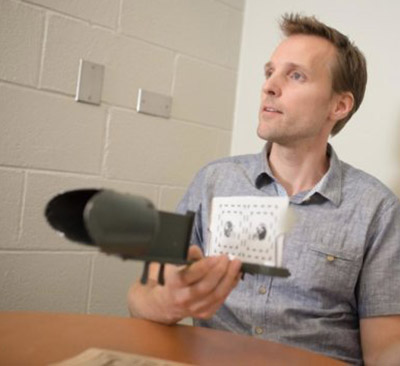
The part of the brain responsible for seeing is more powerful than previously believed. In fact, the visual cortex can essentially make decisions just like the brain's traditional 'higher level' areas, finds a new study. The combination of differing patterns seen by the two eyes creates an optical illusion and perception switches between the two patterns as the brain tries to make sense of the contradictory information the eyes are providing. Previous research using MRI readings indicated the decision to switch perceptions is controlled by the association cortex, which is known for higher-level functions such as making choices, while the visual cortex handles the simpler task of processing visual information. But in those past studies, participants knew the moment their perception changed because the illusion was obvious (such as the famous duck-rabbit image, meaning they were surprised. And the areas of the brain known to be involved with surprise and those involved with making decisions are very similar.
Scientists to bypass brain damage by re-encoding memories Science Daily - September 29, 2015
Researchers are testing a prosthesis that translates short-term memories into longer-term ones, with the potential to bypass damaged portions of the brain. The prosthesis, which includes a small array of electrodes implanted into the brain, has performed well in laboratory testing in animals and is currently being evaluated in human patients.
Particular brain connections linked to positive human traits Science Daily - September 28, 2015

There is a strong correspondence between a particular set of connections in the brain and positive lifestyle and behavior traits, according to a new study. The researchers point out that their results resemble what psychologists refer to as the 'general intelligence g-factor': a variable first proposed in 1904 that's sometimes used to summarize a person's abilities at different cognitive tasks. While the new results include many real-life measures not included in the g-factor -- such as income and life satisfaction, for instance -- those such as memory, pattern recognition and reading ability are strongly mirrored.
Waiting for pleasure Science Daily - August 4, 2015
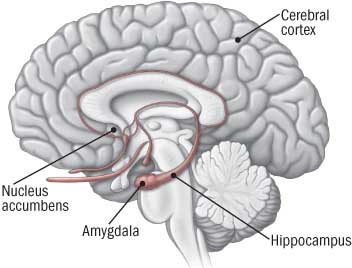
Brain structures involved in delayed gratification identified; implications for range of psychiatric disorders. Researchers have clearly identified, for the first time, the specific parts of the brain involved in decisions that call for delayed gratification. They demonstrated that the hippocampus (associated with memory) and the nucleus accumbens (associated with pleasure) work together in making critical decisions of this type, where time plays a role.
Anxious Brains Are Inherited, Study Finds Live Science - July 8, 2015
The brain function that underlies anxiety and depression is inherited, a new study finds - but there is still plenty of space for experience and environment to reduce the risk of a full-blown mental disorder. The research focused on rhesus monkeys. Like humans, some young rhesus monkeys have what's called an "anxious temperament." Expose them to a mildly stressful situation, like being in a room with a stranger, and the monkeys will stop moving and stop vocalizing while their stress hormones skyrocket. Extremely shy children do the same, said Dr. Ned Kalin, a psychiatrist at the University of Wisconsin–Madison. Kalin and his colleagues scanned the brains of young monkeys, anxious and not, and found three brain regions associated with anxiety that also showed evidence of heritability. About 30 percent of the variation in early anxiety is explained by family history
Why Do I See Patterns When I Close My Eyes? Huffington Post - June 26, 2015
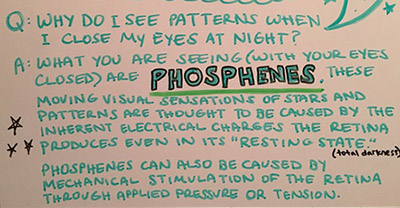
Many people who have seen this visual phenomenon think it is an light-induced afterimage of what they had seen before they closed their eyes but an afterimage may only be part of what they are seeing. The real reason we are treated to this fuzzy fireworks display behind closed lids has to do with phosphenes! Phosphenes are the moving visual sensations of stars and patterns we see when we close our eyes. They are thought to be caused by the inherent electrical charges the retina produces even when it is in its "resting state" and not taking in a ton of information and light like it does when our eyes are open.
Emotional brains 'physically different' from rational ones Science Daily - June 19, 2015
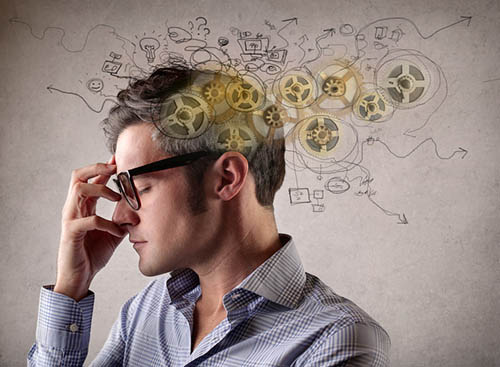
Researchers have found physical differences in the brains of people who respond emotionally to others' feelings, compared to those who respond more rationally. People who are high on affective empathy are often those who get quite fearful when watching a scary movie, or start crying during a sad scene. Those who have high cognitive empathy are those who are more rational.
Study unites neuroscience and psychology to paint more complete picture of sleep and memory PhysOrg - June 11, 2015
A new study from the Florida campus of The Scripps Research Institute (TSRI) integrates neuroscience and psychological research to reveal how sleep is more complex than the Bard might have imagined. The new research shows in animal models that sleep suppresses the activity of certain nerve cells that promote forgetting, insuring that at least some memories will last. We have revealed that one of the ways sleep protects a new memory is by quieting dopamine neuron activity that causes forgetting. Since laboratory animals and humans share a need for sleep, as well as many genetic and circuit mechanisms underlying learning and memory, our findings may shed light on the mechanisms underlying the interaction between sleep and memory in humans.
Researchers observe the moment when a mind is changed Science Daily - May 5, 2015
Researchers studying how the brain makes decisions have, for the first time, recorded the moment-by-moment fluctuations in brain signals that occur when a monkey making free choices has a change of mind. This basic neuroscience discovery will help create neural prostheses that can withhold moving a prosthetic arm until the user is certain of their decision, thereby averting premature or inopportune movements. The team's findings also bear on a longstanding philosophical debate about human consciousness.
Why You Get the Joke: Brain's Sarcasm Center Found Live Science - April 8, 2015
Sarcasm might feel like a natural way to communicate to many people, but it's sometimes lost on stroke survivors. Now, a new study finds that damage to a key structure in the brain may explain why these patients can't perceive sarcasm. Researchers looked at 24 people who had experienced a stroke in the right hemispheres of their brains. Those with damage to the right sagittal stratum tended to have trouble recognizing sarcasm. This bundle of neural fibers connects a number of brain regions, including those that process auditory and visual information. The finding may help families caring for stroke survivors understand why their loved ones don't understand the reason for an eye roll or a certain tone of voice.
'Lightning bolts' in brain show learning in action Science Daily - March 30, 2015
Researchers have captured images of the underlying biological activity within brain cells and their tree-like extensions, or dendrites, in mice that show how their brains sort, store and make sense out of information during learning. Among the study's key findings was that learning motor tasks such as running forward and backward induced completely separate patterns of lightning bolt-like activity in the dendrites of brain cells. These lightning bolts triggered a chain-like reaction, which changed the strength of connections between neurons. The study also identified a unique cell type in the brain that controlled where the lightning bolts were generated. When these cells were turned off, lightning bolt patterns in the brain were disrupted, and as a result, the animal lost the information it had just learned.
After learning new words, brain sees them as pictures PhysOrg - March 24, 2015
When we look at a known word, our brain sees it like a picture, not a group of letters needing to be processed. The brain learns words quickly by tuning neurons to respond to a complete word, not parts of it. Neurons respond differently to real words, such as turf, than to nonsense words, such as turt, showing that a small area of the brain is "holistically tuned" to recognize complete words. This small area in the brain, called the visual word form area, is found in the left side of the visual cortex, opposite from the fusiform face area on the right side, which remembers how faces look. One area is selective for a whole face, allowing us to quickly recognize people, and the other is selective for a whole word, which helps us read quickly.
Teaching science to the brain: How the brain learns the way things work PhysOrg - March 17, 2015
When you learn a new technical concept, something happens in your brain, but exactly what has been a mystery until now.For the first time, Carnegie Mellon University scientists have traced the brain processes that occur during the learning of technical concepts. The findings reveal how new technical knowledge is built up in the brain during the course of different learning stages.
New findings on how the brain ignores distractions PhysOrg - February 3, 2015
When we concentrate on something, we also engage in the unsung, parallel act of purposefully ignoring other things. A new study describes how the brain may achieve such "optimal inattention." With this knowledge, scientists at Brown University hope they can harness our power to ignore for instance, to reduce pain. This is about the mechanisms the brain is using to block out distracting things in the environment.
Genomic differences between developing male and female brains in the womb PhysOrg - February 3, 2015
Researchers examined changes in the way that genes are regulated during human brain development. One observation was that a number of differences in a process called DNA methylation were found between male and female brains, potentially contributing to sex differences in behavior, brain function and disease. The study focussed on the molecular "switches" that regulate the way that genes are activated without changing the underlying DNA blueprint. These processes, known as epigenetics, direct the way in which different cells and tissue types develop, and help differentiate brain cells from those in other parts of the body.
Making sense through order PhysOrg - December 16, 2014
Cognitive scientists at the University of Rochester say they have an alternative to the standard explanation for why order matters when the human mind processes information. Instead of ignoring the order in which people receive information, they embrace it.
Dazzling Images of the Brain Created by Neuroscientist-Artist PhysOrg - December 10, 2014
The brain has been called the most complex structure in the universe, but it may also be the most beautiful. One artist's work captures both the aesthetics and sophistication of this most enigmatic organ. Greg Dunn earned a PhD in neuroscience before deciding to become a professional artist. The patterns of branching neurons he saw through the microscope reminded him of the aesthetic principles in Asian art, which he had always admired. Dunn realized that neurons could be painted in the sumi-e (ink wash painting) style, which involves making as few brush strokes as possible to capture the soul of the subject.
The Brains Of Bipolar Disorder Patients Look Different Huffington Post - December 10, 2014
As brain imaging technologies have advanced and matured over the past few decades, there's been considerable interest in understanding whether and how there are differences between the brains of people with mental illness and those without. In particular, neuroscientists studying depression have been interested in structural variation, such as differences in total brain volume. Still, the various forms of bipolar disorder have received somewhat less attention than others, such as major depression, schizophrenia, or autism.
Study pinpoints part of brain that triggers addiction PhysOrg - December 10, 2014
Activating the brain's amygdala, an almond-shaped mass that processes emotions, can create an addictive, intense desire for sugary foods. Rewards such as sweet tasty food or even addictive drugs like alcohol or cocaine can be extremely attractive when this brain structure is triggered.
Scientists detect brain network that gives humans superior reasoning skills PhysOrg - December 4, 2014
UC Berkeley scientists have found mounting brain evidence that helps explain how humans have excelled at "relational reasoning," a cognitive skill in which we discern patterns and relationships to make sense of seemingly unrelated information, such as solving problems in unfamiliar circumstances.
Researchers identify brain regions that encode words, grammar, story PhysOrg - November 26, 2014
Researchers performed functional magnetic resonance imaging (fMRI) scans of eight people as they read a chapter of a Potter book. They then analyzed the scans, cubic millimeter by cubic millimeter, for every four-word segment of that chapter. The result was the first integrated computational model of reading, identifying which parts of the brain are responsible for such subprocesses as parsing sentences, determining the meaning of words and understanding relationships between characters. Exactly how the brain creates these neural encodings is still a mystery but it is the beginning of understanding what the brain is doing when a person reads.
Imagination, reality flow in opposite directions in the brain Science Daily - November 20, 2014
As real as that daydream may seem, its path through your brain runs opposite reality. Aiming to discern discrete neural circuits, researchers have tracked electrical activity in the brains of people who alternately imagined scenes or watched videos.
Brain's taste secrets uncovered BBC - November 10, 2014
The brain has specialist neurons for each of the five taste categories - salty, bitter, sour, sweet and umami - US scientists have discovered. The separate taste sensors on the tongue had a matching partner in the brain. The scientists hope the findings could be used to help reverse the loss of taste sensation in the elderly. It is a myth that you taste sweet only on the tip of the tongue.
Each of the roughly 8,000 taste buds scattered over the tongue is capable of sensing the full suite of tastes. But specialized cells within the taste bud are tuned to either salty, bitter, sour, sweet or umami tastes. When they detect the signal, a message is sent to the brain. Although how the brain deals with the information has been up for discussion.
This is what brain cell conversations look like
Scientists identify signature of aging in the brain PhysOrg - September 29, 2014
How the brain ages is still largely an open question - in part because this organ is mostly insulated from direct contact with other systems in the body, including the blood and immune systems. In researchers found evidence of a unique "signature" that may be the "missing link" between cognitive decline and aging. The scientists believe that this discovery may lead, in the future, to treatments that can slow or reverse cognitive decline in older people.
Brain encodes time and place of taste memory PhysOrg - September 23, 2014
Have you ever eaten something totally new and it made you sick? Don't give up; if you try the same food in a different place, your brain will be more "forgiving" of the new attempt. In a new study researchers found for the first time that there is a link between the areas of the brain responsible for taste memory in a negative context and those areas in the brain responsible for processing the memory of the time and location of the sensory experience. When we experience a new taste without a negative context, this link doesn't exist.
Brain wave may be used to detect what people have seen, recognize PhysOrg - September 23, 2014
Brain activity can be used to tell whether someone recognizes details they encountered in normal, daily life, which may have implications for criminal investigations and use in courtrooms, new research shows. The findings, published in Psychological Science, a journal of the Association for Psychological Science, suggest that a particular brain wave, known as P300, could serve as a marker that identifies places, objects, or other details that a person has seen and recognizes from everyday life.
Presence or absence of early language delay alters anatomy of the brain in autism PhysOrg - September 23, 2014
A new study led by researchers from the University of Cambridge has found that a common characteristic of autism - language delay in early childhood - leaves a 'signature' in the brain.The researchers studied 80 adult men with autism: 38 who had delayed language onset and 42 who did not. They found that language delay was associated with differences in brain volume in a number of key regions, including the temporal lobe, insula, ventral basal ganglia, which were all smaller in those with language delay; and in brainstem structures, which were larger in those with delayed language onset.
Flexing the brain: Scientists discover why learning tasks can be difficult PhysOrg - August 28, 2014
Learning a new skill is easier when it is related to an ability we already have. For example, a trained pianist can learn a new melody easier than learning how to hit a tennis serve. Scientists from the Center for the Neural Basis of Cognition have discovered a fundamental constraint in the brain that may explain why this happens. They found for the first time that there are limitations on how adaptable the brain is during learning and that these restrictions are a key determinant for whether a new skill will be easy or difficult to learn. Understanding the ways in which the brain's activity can be "flexed" during learning could eventually be used to develop better treatments for stroke and other brain injuries.
Neuroscientists watch imagination happening in the brain PhysOrg - August 28, 2014
Stefania Ashby and her faculty mentor devised experiments using MRI technology that would help them distinguish pure imagination from related processes like remembering. There's a bit of scientific debate over whether memory and imagination truly are distinct processes. Ashby and her faculty mentor devised MRI experiments to put it to the test. They were able to see the distinctions even in those small regions of the hippocampus.
Our genes determine the traces that stress leaves behind on our brains PhysOrg - August 18, 2014
Not every individual reacts in the same way to life events that produce the same degree of stress. Some grow as a result of the crisis, whereas others break down and fall ill, for example with depression. The outcome is determined by a complex interaction between depression gene versions and environmental factors. There are interactions between stressful life events and certain risk gene variants that subsequently change the volume of the hippocampus forever. The hippocampus is a switching station in the processing of emotions and acts like a central interface when dealing with stress.
New research explains how we use the GPS inside our brain to navigate PhysOrg - June 5, 2014
The way we navigate from A to B is controlled by two brain regions which track the distance to our destination. The study found that at the beginning of a journey, one region of the brain calculates the straight-line to the destination ('the distance as a crow flies'), but during travel a different area of the brain computes the precise distance along the path to get there.
Uploading the Mind: Could a Digital Brain Feel Pain? BBC - June 2, 2014
Scientists may one day be able to use electronic copies of human brains to explore the nature of the mind. But is it ethical to make that e-mind suffer and die if one can resurrect it at will and delete any memory of the suffering? Successfully emulating human or animal brains could pose many ethical challenges regarding the suffering these copies may undergo, a researcher says. Scientists are pursuing several strategies to create intelligent software. In one, called "whole brain emulation" or "mind uploading," scientists would scan a brain in detail and use that data to construct a software model. When run on appropriate hardware, this model would essentially replicate the original brain.
Learning second language 'slows brain aging' BBC - June 2, 2014
Learning a second language can have a positive effect on the brain, even if it is taken up in adulthood, a University of Edinburgh study suggests.
Your brain is fine-tuning its wiring throughout your life Science Daily - February 3, 2014
The white matter microstructure, the communication pathways of the brain, continues to develop/mature as one ages. Studies link age-related differences in white matter microstructure to specific cognitive abilities in childhood and adulthood.
Researchers discover how brain regions work together, or alone Science Daily - February 3, 2014
Various regions of the brain often work independently. But what happens when two regions must cooperate to accomplish a task? What mechanism allows them to communicate in order to cooperate, yet avoid interfering with one another when they work alone? Scientists reveal a previously unknown process that helps two brain regions cooperate when joint action is required.
The brain's function in perseverance PhysOrg - December 6, 2013
Perseverance is a quality that plays a large role in the success or failure of many pursuits. It has never been entirely clear why this trait seems more apparent in some people than others, but a new piece of research may at least help explain where it comes from. The research team found stimulating part of the anterior cingulate cortex, an area of the brain commonly associated with emotion and decision making, produced a feeling of anxiety in each of the subjects - combined with a strong willingness to overcome it.
Researchers gain new insights into brain neuronal networks PhysOrg - November 4, 2013
A paper published in a special edition of the journal Science proposes a novel understanding of brain architecture using a network representation of connections within the primate cortex. Using brain-wide and consistent tracer data, the researchers describe the cortex as a network of connections with a "bow tie" structure characterized by a high-efficiency, dense core connecting with "wings" of feed-forward and feedback pathways to the rest of the cortex (periphery). The local circuits, reaching to within 2.5 millimeters and taking up more than 70 percent of all the connections in the macaque cortex, are integrated across areas with different functional modalities (somatosensory, motor, cognitive) with medium- to long-range projections.
Surprising Variation Among Genomes of Individual Neurons from Same Brain Science Daily - November 4, 2013
It was once thought that each cell in a person's body possesses the same DNA code and that the particular way the genome is read imparts cell function and defines the individual. For many cell types in our bodies, however, that is an oversimplification. Studies of neuronal genomes published in the past decade have turned up extra or missing chromosomes, or pieces of DNA that can copy and paste themselves throughout the genomes.
The Unlikely Network at the Core of Your Brain's Internet Wired - October 30, 2013
To successfully send a text message, your brain has to compose the wording and coordinate the deft tapping of your thumbs while checking for typos. Solving a simple algebra problem involves the visual cortex - to process the symbols - and the parts of the brain used for computation and short-term memory. And driving, best performed without texting, requires a combination of visual, tactile and spatial data. How do different areas of the brain communicate and coordinate their efforts to complete these tasks? Neuroscientists have long struggled to understand the brain's ability to synthesize a dog's breakfast of sensory inputs and cognitive processes. But a growing body of evidence suggests that a network of highly interlinked brain regions exists that could prove essential in facilitating higher-order tasks. This collection of highly connected hubs has been dubbed the "rich club" network because it resembles groups of well-connected individuals, such as Ivy League alumni organizations, that help others meet and exchange information.'
'Minicomputers' Live Inside the Human Brain Live Science - October 29, 2013
The brain may be an even more powerful computer than before thought - microscopic branches of brain cells that were once thought to basically serve as mere wiring may actually behave as minicomputers, researchers say. The most powerful computer known is the brain. The human brain possesses about 100 billion neurons with roughly 1 quadrillion - 1 million billion - connections known as synapses wiring these cells together. Neurons each act like a relay station for electrical signals. The heart of each neuron is called the soma - a single thin cable-like fiber known as the axon that sticks out of the soma carries nerve signals away from the neuron, while many shorter branches called dendrites that project from the other end of the soma carry nerve signals to the neuron.
New high-res images show brain activity like never before PhysOrg - October 4, 2013
In the middle of the human brain there is a tiny structure shaped like an elongated donut that plays a crucial role in managing how the body functions. Measuring just 10 millimeters in length and six millimeters in diameter, the hollow structure is involved in a complex array of behavioral, cognitive, and affective phenomena, such as the fight or flight response, pain regulation, and even sexual activity.
Some Brains May Be Hard-Wired for Chronic Pain Live Science - September 18, 2013
Structural differences in the brain may be one reason why one person recovers from pain while another develops chronic agony, a new study suggests. The researchers scanned the brains of 46 people who had lower back pain for about three months, and then evaluated their pain four times over the following year. About half of the patients recovered during the year; the other half continued to have persistent pain throughout the study.
Left Brain vs. Right: It's a Myth, Research Finds Live Science - September 3, 2013
It's the foundation of myriad personality assessment tests, self-motivation books and team-building exercises - and it's all bunk. Popular culture would have you believe that logical, methodical and analytical people are left-brain dominant, while the creative and artistic types are right-brain dominant. Trouble is, science never really supported this notion. Now, scientists at the University of Utah have debunked the myth with an analysis of more than 1,000 brains. They found no evidence that people preferentially use their left or right brain. All of the study participants - and no doubt the scientists - were using their entire brain equally, throughout the course of the experiment.
Researcher Controls Colleague's Motions in First Human Brain-To-Brain Interface Science Daily - August 28, 2013
University of Washington researchers have performed what they believe is the first noninvasive human-to-human brain interface, with one researcher able to send a brain signal via the Internet to control the hand motions of a fellow researcher.
Brain picks out salient sounds from background noise by tracking frequency and time PhysOrg - July 23, 2013
New research reveals how our brains are able to pick out important sounds from the noisy world around us. Our ears can effortlessly pick out the sounds we need to hear from a noisy environment - hearing our mobile phone ringtone in the middle of the Notting Hill Carnival, for example - but how our brains process this information (the so-called 'cocktail party problem') has been a longstanding research question in hearing science. Researchers have previously investigated this using simple sounds such as two tones of different pitches, but now have used complicated sounds that are more representative of those we hear in real life. The team used 'machine-like beeps' that overlap in both frequency and time to recreate a busy sound environment and obtain new insights into how the brain solves this problem.
 Scientists create first 3D digital brain BBC - June 20, 2013
Scientists create first 3D digital brain BBC - June 20, 2013
Researchers have created the first high-resolution 3D digital model of the human brain, which they have called "Big Brain". The reconstruction shows the brain's anatomy in microscopic detail, enabling researchers to see features smaller than a strand of hair.
Researchers identify emotions based on brain activity PhysOrg - June 19, 2013
For the first time, scientists at Carnegie Mellon University have identified which emotion a person is experiencing based on brain activity. The findings illustrate how the brain categorizes feelings, giving researchers the first reliable process to analyze emotions. Until now, research on emotions has been long stymied by the lack of reliable methods to evaluate them, mostly because people are often reluctant to honestly report their feelings. Further complicating matters is that many emotional responses may not be consciously experienced.
Brain Can Plan Actions Toward Things the Eye Doesn't See Science Daily - June 19, 2013
People can plan strategic movements to several different targets at the same time, even when they see far fewer targets than are actually present. A team of researchers at the Brain and Mind Institute at the University of Western Ontario took advantage of a pictorial illusion -- known as the "connectedness illusion" -- that causes people to underestimate the number of targets they see. When people act on these targets, however, they can rapidly plan accurate and strategic reaches that reflect the actual number of targets. Using sophisticated statistical techniques to analyze participants' responses to multiple potential targets, the researchers found that participants' reaches to the targets were unaffected by the presence of the connecting lines. Thus, the "connectedness illusion" seemed to influence the number of targets they perceived but did not impact their ability to plan actions related to the targets.
Brain System for Emotional Self-Control Discovered Science Daily - May 9, 2013
Different brain areas are activated when we choose to suppress an emotion, compared to when we are instructed to inhibit an emotion. In this study, published in Brain Structure and Function, the researchers scanned the brains of healthy participants and found that key brain systems were activated when choosing for oneself to suppress an emotion. They had previously linked this brain area to deciding to inhibit movement. This result shows that emotional self-control involves a quite different brain system from simply being told how to respond emotionally
Individual Brain Cells Track Where We Are and How We Move Science Daily - May 5, 2013
Leaving the house in the morning may seem simple, but with every move we make, our brains are working feverishly to create maps of the outside world that allow us to navigate and to remember where we are. Take one step out the front door, and an individual brain cell fires. Pass by your rose bush on the way to the car, another specific neuron fires. And so it goes. Ultimately, the brain constructs its own pinpoint geographical chart that is far more precise than anything you'd find on Google Maps.
Taste of beer, without effect from alcohol, triggers dopamine release in the brain PhysOrg - April 16, 2013
The taste of beer, without any effect from alcohol itself, can trigger dopamine release in the brain, which is associated with drinking and other drugs of abuse.
Stimulating the brain blunts cigarette craving PhysOrg - April 16, 2013
Cigarette smoking is the leading cause of preventable deaths globally. Unfortunately smoking cessation is difficult, with more than 90% of attempts to quit resulting in relapse.
Bad Decisions Arise from Faulty Information, Not Faulty Brain Circuits Science Daily - April 16, 2013
Making decisions involves a gradual accumulation of facts that support one choice or another. A person choosing a college might weigh factors such as course selection, institutional reputation and the quality of future job prospects. But if the wrong choice is made, Princeton University researchers have found that it might be the information rather than the brain's decision-making process that is to blame. The researchers report in the journal Science that erroneous decisions tend to arise from errors, or "noise," in the information coming into the brain rather than errors in how the brain accumulates information.
Brain Development Is Guided by Junk DNA That Isn't Really Junk Science Daily - April 16, 2013
Specific DNA once dismissed as junk plays an important role in brain development and might be involved in several devastating neurological diseases, UC San Francisco scientists have found. While researchers have been busy exploring the roles of proteins encoded by the genes identified in various genome projects, most DNA is not in genes. This so-called junk DNA has largely been pushed aside and neglected in the wake of genomic gene discoveries, the UCSF scientists said.
Mental Picture of Others Can Be Seen Using fMRI, Finds New Study Science Daily - March 5, 2013
It is possible to tell who a person is thinking about by analyzing images of his or her brain. Our mental models of people produce unique patterns of brain activation, which can be detected using advanced imaging techniques according to a study by Cornell University neuroscientist Nathan Spreng. When we looked at our data, we were shocked that we could successfully decode who our participants were thinking about based on their brain activity," Understanding and predicting the behavior of others is a key to successfully navigating the social world, yet little is known about how the brain actually models the enduring personality traits that may drive others' behavior, the authors say. Such ability allows us to anticipate how someone will act in a situation that may not have happened before.
Secret to Self-Control: A More Efficient Brain? Live Science - January 22, 2013
People with greater self-control may have brains that function more efficiently, a new study suggests. The findings are only correlational, and so they can't tease out whether efficient brains cause the greater self-control. However, the results hint that those with self-control may have extra willpower because it takes them less effort to exert it.
Researchers find clues to how the brain decides when to rest PhysOrg - January 22, 2013
Scientists studying how people make decisions regarding work have over time devised theories of cost versus benefit scenarios to describe what causes people to engage in work activities, or to not. Not so well studied is how people come to decide when it's time to take a break. Some have suggested that some part of the brain is constantly engaged in weighing the costs of the work involved with potential rewards, and based on both creates a signal of sorts alerting the rest of the brain to when it's time to pause. This new research supports that theory.
Brain structure of infants predicts language skills at one year PhysOrg - January 22, 2013
Using a brain-imaging technique that examines the entire infant brain, researchers have found that the anatomy of certain brain areas - the hippocampus and cerebellum - can predict children's language abilities at 1 year of age.
Uncovering the secrets of 3D vision: How glossy objects can fool the human brain PhysOrg - January 22, 2013
It's a familiar sight at the fairground: rows of people gaping at curvy mirrors as they watch their faces and bodies distort. But while mirrored surfaces may be fun to look at, new findings by researchers from the Universities of Birmingham, Cambridge and Giessen, suggest they pose a particular challenge for the human brain in processing images for 3D vision.
Where does it hurt? Pain map discovered in the human brain PhysOrg - November 29, 2012
Scientists have revealed the minutely detailed pain map of the hand that is contained within our brains, shedding light on how the brain makes us feel discomfort and potentially increasing our understanding of the processes involved in chronic pain.
Universe Grows Like a Giant Brain Live Science - November 27, 2012
The universe may grow like a giant brain, according to a new computer simulation. The results suggest that some undiscovered, fundamental laws may govern the growth of systems large and small, from the electrical firing between brain cells and growth of social networks to the expansion of galaxies. "Natural growth dynamics are the same for different real networks, like the Internet or the brain or social networks. Past studies showed brain circuits and the Internet look a lot alike. But despite finding this functional similarity, nobody had developed equations to perfectly predict how computer networks, brain circuits or social networks grow over time.
What Happens to the Brain in a Coma Live Science - November 27, 2012
What is going on inside the heads of individuals in a coma has been steeped in mystery. Now, a new study finds coma patients have dramatically reorganized brain networks, a finding that could shed light on the mystery of consciousness. Compared with healthy patients in the study, high-traffic hubs of brain activity are dark in coma patients while more quiet regions spring to life. Consciousness may depend on the anatomical location of these hubs in the human brain network.
How connections in the brain must change to form memories could help to develop artificial cognitive computers PhysOrg - November 7, 2012
Exactly how memories are stored and accessed in the brain is unclear. Neuroscientists, however, do know that a primitive structure buried in the center of the brain, called the hippocampus, is a pivotal region of memory formation. Here, changes in the strengths of connections between neurons, which are called synapses, are the basis for memory formation. Networks of neurons linking up in the hippocampus are likely to encode specific memories.
Science Explains Instant Attraction Live Science - November 7, 2012
How do you know when you're attracted to a new face? Thank your medial prefrontal cortex, a brain region now discovered to play a major role in romantic decision-making. Different parts of this region, which sits near the front of the brain, make a snap judgment about physical attraction and about whether the person is Mr. or Ms. Right - all within milliseconds of seeing a new face, a new study from Ireland finds. The research is the first to use real-world dating to examine how the brain makes fast romantic judgments.
When You're At Rest, Your Brain's Right Side Hums Live Science - October 18, 2012
There's plenty of brain activity even when people are thinking nothing at all. But it's the brain's right side - for most people the less-dominant half - that stays busiest while you're at rest, according to surprising new findings. Researchers found that during periods of wakeful rest, the right hemisphere of the brain chatters more to itself than the left hemisphere does. It also sends more messages to the left hemisphere than vice versa. Surprisingly, this remains true whether the owner of the brain is left- or right-handed. That seems odd, because in right-handed people the left hemisphere is the dominant one, and in left-handed people the right is usually more dominant.
Feel-Good Brain Chemical's Role in Sleep Live Science - June 20, 2012
A feel-good brain chemical called dopamine has been linked to everything from laziness and creativity to impulsivity and a tendency to partake in one-night stands. Now, we can add sleep regulation to that list. When dopamine latches onto its receptor in a special part of the brain, it seems to signal the body to "wake up" by turning down levels of the sleepiness hormone melatonin, the researchers found. The first clue to this new discovery came when researchers noticed that dopamine receptor 4, a protein on the outside of certain cells that binds to dopamine, was active in the part of the brain called pineal gland. This gland regulates our internal clock, known as our circadian rhythm, by releasing melatonin in response to light.